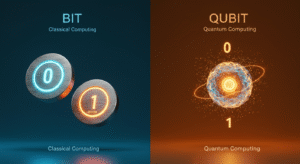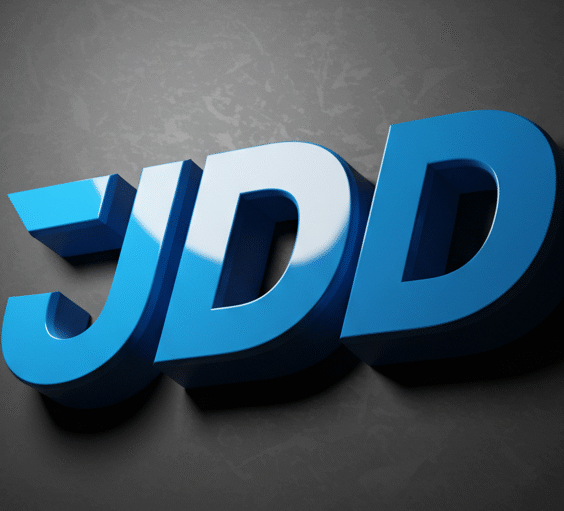Quantum Computer Core Concepts Made Easy
Quantum computers are a next-generation technology that operates in a completely different way from conventional computers. They have enormous potential in terms of information processing and computational power, and are expected to bring about innovation in various fields such as artificial intelligence, cryptography, new drug development, and financial modeling.
However, terms like qubit, entanglement, superposition, and gate are so unfamiliar to the general public that many people find quantum computers difficult. It may be a distant concept for the general public to understand, but even so, things that felt like distant worlds like blockchain and AI have deeply entered our lives and will definitely enter our lives in the near future, so I think you should read this at least once. So in this article, I will explain the core concepts of quantum computers as easily as possible. In particular, if you want to clearly understand what a 'qubit' is and why it is so important, please read to the end.
What is a Qubit?
A qubit is the basic unit of a quantum computer, and is the smallest unit that stores information, like a bit in a classical computer. However, unlike a conventional bit, a qubit can store much more flexible and complex information.
- Normal bit: can only have one value, either 0 or 1
- Qubit: Can be both 0 and 1 at the same time (superposition state)

For example, two qubits can simultaneously represent four states: 00, 01, 10, and 11. This means that as the number of qubits increases, the amount of calculations that a quantum computer can process in parallel increases exponentially.
Qubits are implemented in several ways:
- Superconducting circuit method (Google, IBM, etc.)
https://en.wikipedia.org/wiki/Superconducting_quantum_computing
- Ion capture method (IonQ, Honeywell)
https://en.wikipedia.org/wiki/Trapped-ion_quantum_computer
- Photon-based qubits (using light, Xanadu, etc.)
https://en.wikipedia.org/wiki/Linear_optical_quantum_computing
- Trapped Atoms (atom computing)
https://en.wikipedia.org/wiki/Neutral_atom_quantum_computer
Each method has different advantages and disadvantages, such as difficulty of implementation, maintenance conditions, and error rates.
Superposition
Superposition is one of the core concepts of quantum mechanics. A superposition state is a state in which a qubit can be both 0 and 1 at the same time.
Simply put, classical computers can only express a switch being on (1) or off (0), but in quantum computers, the switch can be in both on and off states at the same time.
This superposition allows quantum computers to calculate many different cases at once.
Entanglement
Entanglement is a state in which two or more qubits are connected to each other even though they are physically separated. When the state of one qubit is measured, the state of the other qubit is also immediately determined.
This property allows quantum computers to have fast and powerful interactions between qubits. Entanglement plays a crucial role in secure communication (quantum cryptography), parallel computing, and information sharing, and is one of the biggest differences from classical computers.
Quantum Gate
Quantum gates are logic operation devices that change the state of qubits. Just as classical computers perform calculations using logic gates such as AND, OR, and NOT, quantum computers perform calculations by combining various quantum gates.
Representative quantum gates include:
- Hadamard gate: Putting qubits in superposition
- Pauli-X gate: Inverts the state of a qubit (similar to a classical NOT gate)
- CNOT gate: entangles two qubits (used in entanglement operations)
- T-gate, S-gate: Applying phase shift
By combining these gates, we construct quantum algorithms.
Measurement
Quantum computers have qubits that can hold multiple states at the same time during a calculation, but the moment we make a “measurement” to obtain the result of the calculation, the qubit is determined to be in one state. At this point, the quantum state “collapses” and appears as a value of either 0 or 1, with probability.
This measurement process allows us to read the results of a quantum computer's calculations.
Decoherence
Decoherence is the phenomenon in which a qubit loses its sensitive quantum state when it comes into contact with the external environment. Simply put, since qubits are very delicate and unstable entities, their state can be broken even by external factors such as slight vibrations, temperature changes, and magnetic fields.
Preventing decoherence is one of the biggest technical challenges in the development of quantum computers today, which is why quantum error correction technology is also being studied.
Quantum Algorithms
The reason why quantum computers are faster than classical computers is because of quantum algorithms. Quantum algorithms are programs designed to solve problems much faster than classical computers by utilizing superposition, entanglement, quantum gates, etc.
Representative quantum algorithms include:
- Shor's Algorithm: Solving the factorization problem of large numbers (applied to cryptography)
- Grover's Algorithm: Finding the desired item quickly in unsorted data
In addition, various algorithms are being studied in fields such as quantum machine learning, quantum simulation, and quantum optimization.
In conclusion
Quantum computers may seem very complicated and difficult at first glance, but if you organize the basic concepts one by one, they become easier to understand. The concepts we covered today, such as qubits, superposition, entanglement, gates, measurement, and decoherence, are essential elements for understanding quantum computers.
Although currently in the laboratory or in limited use through the cloud, quantum computers will soon become a technology we use in our daily lives. As they are receiving attention as one of the core technologies of future society, it will be of great help to learn the terms and concepts from now on.
Global companies such as Google, IBM, Microsoft, and Amazon AWS CompaniesThe world is also investing heavily in quantum computing research, and some are already offering limited access to quantum computers through cloud platforms. The day may soon come when we can solve problems using quantum computers ourselves.
Get ready for the era of quantum computers, starting now!
Three line summary
- A qubit is the basic unit of a quantum computer that can represent 0 and 1 simultaneously, enabling parallel computation.
- By utilizing quantum phenomena such as superposition and entanglement, problems that are difficult for conventional computers can be solved quickly.
- Cloud-based quantum computers are now accessible and are likely to become everyday tools in the near future.
